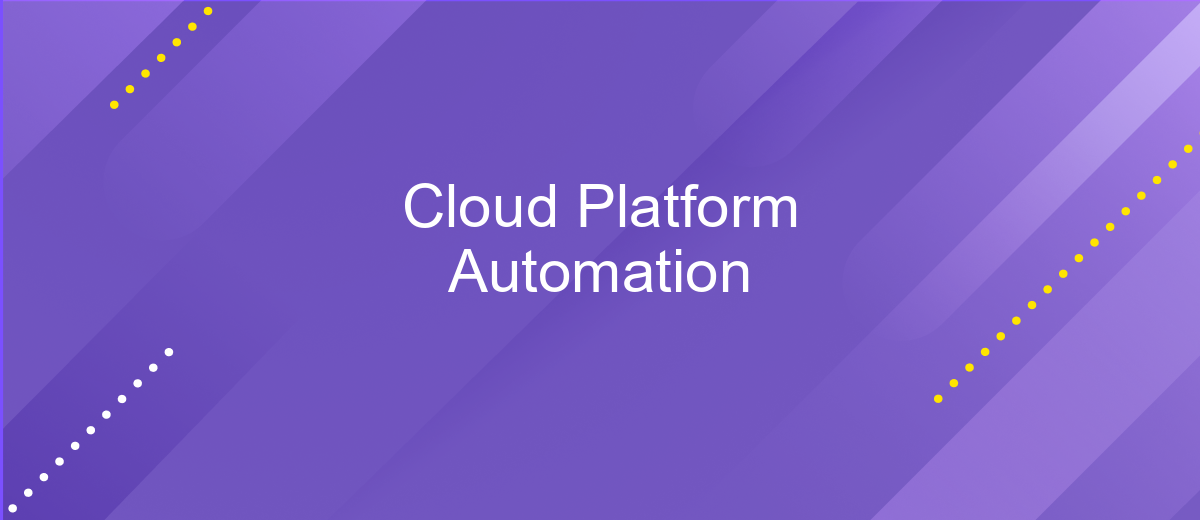Cloud Platform Automation
In today's rapidly evolving digital landscape, cloud platform automation has emerged as a pivotal innovation, transforming how businesses manage and optimize their IT environments. By streamlining processes and reducing manual intervention, automation enhances efficiency, scalability, and reliability. This article explores the key benefits and strategies for implementing cloud platform automation, offering insights into how organizations can leverage this technology to drive growth and maintain a competitive edge.
Introduction: Cloud Platform Automation
In today's fast-paced digital landscape, cloud platform automation has emerged as a critical component for businesses seeking to enhance efficiency and scalability. By automating routine tasks and processes, organizations can focus on innovation and strategic growth rather than being bogged down by manual operations. Cloud automation not only reduces operational costs but also minimizes the risk of human error, ensuring a more reliable and consistent service delivery.
- Streamlined resource management
- Enhanced scalability and flexibility
- Improved security and compliance
- Cost efficiency and optimization
- Accelerated deployment and time-to-market
As enterprises continue to embrace digital transformation, the demand for robust cloud automation solutions is on the rise. These tools empower IT teams to manage complex environments with ease, allowing for seamless integration and orchestration of various services. With cloud automation, businesses are better equipped to respond to market changes, innovate rapidly, and maintain a competitive edge in an ever-evolving technological landscape.
Unlocking the Benefits of Cloud Automation

Cloud automation is revolutionizing the way businesses operate by streamlining processes and reducing manual intervention. By automating repetitive tasks, organizations can significantly enhance efficiency and reduce operational costs. This transformation allows IT teams to focus on strategic initiatives rather than mundane tasks, fostering innovation and agility. Moreover, cloud automation ensures consistent performance and reliability, minimizing the risk of human error and enhancing service delivery. As businesses increasingly adopt cloud solutions, the ability to automate workflows becomes crucial for maintaining a competitive edge in the digital landscape.
One of the key benefits of cloud automation is the seamless integration of various services and applications. Tools like ApiX-Drive facilitate this process by enabling easy setup and management of integrations without requiring extensive technical expertise. By leveraging such platforms, businesses can automate data transfers and synchronize information across different systems, ensuring real-time accuracy and efficiency. This not only saves time but also empowers organizations to make data-driven decisions swiftly. Ultimately, embracing cloud automation unlocks a world of opportunities, driving growth and scalability in an ever-evolving market.
Key Technologies for Cloud Platform Automation

Cloud platform automation is revolutionizing the way businesses manage and deploy their IT resources. At the heart of this transformation are several key technologies that streamline operations and enhance efficiency. These technologies enable seamless integration, scalability, and flexibility, allowing organizations to focus more on innovation and less on infrastructure management.
- Infrastructure as Code (IaC): This technology allows for the management of infrastructure through code, enabling consistent and repeatable deployments.
- Containerization: Tools like Docker and Kubernetes facilitate the deployment and management of applications in isolated containers, ensuring consistency across environments.
- Continuous Integration/Continuous Deployment (CI/CD): These practices automate the software release process, ensuring rapid and reliable delivery.
- Serverless Computing: This model allows developers to build and run applications without managing servers, optimizing resource usage.
- Artificial Intelligence and Machine Learning: AI and ML enhance automation by predicting needs and optimizing resource allocation.
By leveraging these technologies, organizations can achieve greater agility and responsiveness in their cloud operations. As the landscape of cloud computing continues to evolve, staying at the forefront of these technologies will be crucial for maintaining a competitive edge.
Case Studies and Success Stories

In recent years, numerous organizations have reaped significant benefits from automating their cloud platforms. A leading e-commerce company, for instance, enhanced its operational efficiency by implementing automated scaling solutions. This allowed them to handle increased traffic during peak shopping seasons without manual intervention, ultimately improving customer satisfaction and boosting sales.
Another success story comes from a healthcare provider that utilized cloud automation to streamline data management and compliance processes. By automating data backups and security protocols, they not only ensured data integrity but also reduced the risk of human error, leading to enhanced patient trust and regulatory compliance.
- A financial services firm reduced operational costs by 30% through automated resource management.
- An educational institution improved student engagement by automating virtual classroom setups.
- A media company accelerated content delivery by automating their content distribution network.
The versatility of cloud platform automation enables businesses across various sectors to innovate and optimize their operations. By reducing manual tasks and increasing system reliability, companies can focus on strategic growth and delivering exceptional value to their customers. These success stories highlight the transformative potential of automation in the cloud landscape.
Future Trends and Innovations
As cloud platform automation continues to evolve, the future promises even greater integration of artificial intelligence and machine learning to optimize resource management and cost efficiency. These technologies will enable predictive analytics, allowing systems to anticipate and respond to workload demands automatically. This shift towards more intelligent automation will not only enhance performance but also ensure seamless scalability, adapting to the dynamic needs of businesses worldwide.
In addition to AI-driven advancements, the future of cloud automation will see increased emphasis on interoperability and integration. Platforms like ApiX-Drive will play a pivotal role in simplifying the integration process, enabling businesses to connect disparate services and automate workflows effortlessly. This trend towards enhanced connectivity will empower organizations to streamline operations, reduce manual intervention, and foster innovation. As these technologies mature, businesses will gain unprecedented agility, positioning themselves to capitalize on emerging opportunities in the digital landscape.
FAQ
What is Cloud Platform Automation?
How can Cloud Platform Automation benefit my business?
What are some common use cases for Cloud Platform Automation?
How can I integrate different cloud services using automation?
What should I consider when implementing Cloud Platform Automation?
Apix-Drive is a universal tool that will quickly streamline any workflow, freeing you from routine and possible financial losses. Try ApiX-Drive in action and see how useful it is for you personally. In the meantime, when you are setting up connections between systems, think about where you are investing your free time, because now you will have much more of it.

